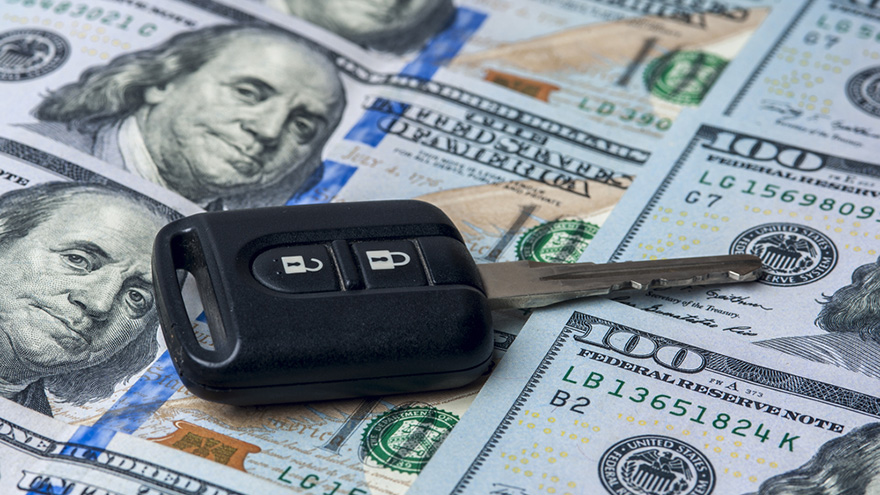Experian sees outstanding deep subprime balances drop to all-time low

By subscribing, you agree to receive communications from Auto Remarketing and our partners in accordance with our Privacy Policy. We may share your information with select partners and sponsors who may contact you about their products and services. You may unsubscribe at any time.
SCHAUMBURG, Ill. –
The amount of outstanding deep subprime paper slid to an all time low during the second quarter, according to Experian’s State of the Automotive Finance Market report released on Thursday.
Analysts discovered deep subprime softened to an all-time low of 3.54 percent of the $1.149 trillion that Experian tabulated to be the total amount of outstanding auto-finance balances as of the close of Q2. A year ago, 3.98 percent of all outstanding balances fell into the deep subprime category.
To reiterate, Experian classifies deep subprime paper to be attached to consumers with credit scores between 300 and 500.
Overall, Experian determined that outstanding subprime and deep subprime auto financing — individuals with credit scores below 600 — declined to less than 19 percent of the market. As a result, the report showed average credit scores for new- and used-vehicle financing continue to improve, reaching 715 and 655, respectively.
“Having access to quality credit is something every consumer deserves, regardless of the type of financing used. As the cost of vehicles rises, lenders need to make sure they’re leveraging all available data so they can offer comprehensive financing options to all consumers,” said Melinda Zabritski, Experian’s senior director of automotive financial solutions.
“Consumers can also take steps to make sure they’re financially ready when looking to buy a car. We’re seeing the positive trend of on-time payments, which is just one step toward improving credit scores.”
Subscribe to Auto Remarketing to stay informed and stay ahead.
By subscribing, you agree to receive communications from Auto Remarketing and our partners in accordance with our Privacy Policy. We may share your information with select partners and sponsors who may contact you about their products and services. You may unsubscribe at any time.
Meanwhile, as contract amounts and monthly payments continue to reach new highs, Experian thinks that consumers seem unfazed since the percentage of 30- and 60-day delinquencies improved during Q2.
Report findings showed 30-day delinquencies dropped to 2.11 percent from 2.2 percent a year ago, while 60-day delinquencies dropped to 0.64 percent from 0.67 percent over the same time period.
“As we monitor the health of the automotive market, delinquencies are one of the most telling metrics. If this downward trend continues, it can be an encouraging sign,” Zabritski said.
“Moving forward, lenders will want to keep a close eye on car buyers’ payment performance. Understanding these trends and leveraging the power of data helps lenders make the right decisions when analyzing risk,” she continued.
But while delinquencies trend downward, affordability remains a point of industry interest, as the average amount financed continues to rise across the spectrum.
The average new-vehicle installment contract amount jumped more than $700 year-over-year to $30,958 in Q2, while used-vehicle installment contract figures increased $520 to reach $19,708.
Moreover, Experian pointed out that new- and used-vehicle monthly payments hit record highs during the quarter, with the average new monthly payment increasing $20 year-over-year to $525, and the average used monthly payment increasing $13 over the same time period, reaching $378.
Taking an even closer look at the data, Experian explained that finance companies can gain insights from the gap between new and used financing payments, which continues to widen, reaching $147 in the second quarter.
“For some consumers, that gap can mean the difference between buying a new or used vehicle,” Experian said.
The report also showed that consumers are increasingly looking to credit unions to secure automotive financing.
Credit unions saw double-digit growth for new-vehicle financing (12.9 percent) and strong growth overall (4.9 percent), closing in on 21.3 percent of the market at the end of Q2.
The only other provider type to experience growth was captive finance companies, which grew 1.2 percent during the same time period.
Experian mentioned five other additional findings from its latest report, including:
— Outstanding loan balances hit a record high but experienced slowing growth, reaching $1.149 trillion in Q2 2018, up from $1.027 trillion in Q2 2016.
— Leases decreased slightly year-over-year, from 30.83 percent in Q2 2017 to 30.41 percent in Q2 2018.
— 72 months remains the most common loan term for both new and used installment contracts.
— Market share for banks dropped to 31.6 percent in Q2 2018 from 32.3 percent in Q2 2017.
— Interest rates increased across all contract types, with the exception of used-vehicle deals in the deep-subprime segment.


